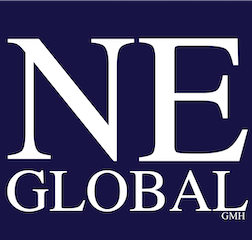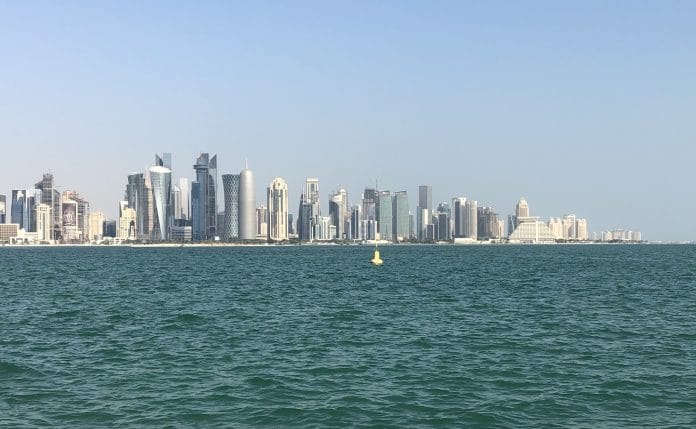At the recent High-Level Meeting for the Least Developed Countries (LDCs), held in Seville on the sidelines of the Fourth International Conference on Financing for Development (FFD4), Qatar once again affirmed its commitment to supporting the world’s most vulnerable nations. This latest reaffirmation follows its high-profile hosting of the Fifth United Nations Conference on the Least Developed Countries (LDC5) in March 2023, and signals continued alignment with the ambitious Doha Programme of Action for the LDCs (DPoA).
Yet a central question persists: is this a genuine lifeline of solidarity, or a calculated public diplomacy initiative wrapped in the language of humanitarianism?
This question is not intended to provoke cynicism. Rather, it reflects the urgent need to interrogate the political economy of global solidarity and international support mechanisms – especially in an era of heightened inequality, shrinking aid budgets, and increasing geopolitical volatility. At the heart of the matter lies the credibility of global development partnerships and Qatar’s ability to take on a larger share of responsibility, particularly given the mounting humanitarian and reconstruction needs in its own region, notably in Palestine, Syria, and Lebanon.
Qatar’s Global Development Posture: Between Strategy and Solidarity
Over the past decade, Qatar has significantly expanded its global development footprint. Through the Qatar Fund for Development (QFFD) it has invested in education, healthcare, infrastructure, and humanitarian assistance in many LDCs in sub-Saharan Africa and South Asia. Many of these initiatives align closely with the six thematic priorities of the DPoA – especially digital inclusion, climate resilience, and human capital development.
On paper, these efforts suggest a strong development ethos. But the visibility and symbolism of Qatar’s involvement in LDC causes raise important questions. Hosting LDC5 in Doha – at a moment when Qatar was emerging from a regional blockade and rebranding itself on the global stage post-FIFA World Cup – offered an unparalleled opportunity to project international credibility. Qatar now straddles two spheres: the donor club of high-income, energy-rich states, and the Global South bloc with which it often expresses solidarity. This dual positioning – part altruism, part geopolitical strategy – is what makes Qatar’s role both intriguing and ripe for scrutiny.
The Doha Programme of Action: Blueprint or Brand?
Adopted in Doha in 2023, the DPoA is not a ceremonial document. It is a ten-year framework with ambitious and measurable objectives, including halving the digital divide, increasing access to education, improving trade integration, and enhancing resilience to climate shocks. For LDCs, it offers a vision of transformation – if implemented sincerely and adequately funded.
Qatar’s pledge in Seville of $60 million to support the DPoA’s implementation is commendable. Yet without transparent mechanisms for deployment and impact monitoring, such contributions risk being diluted into administrative overheads, conference logistics, and consultancy contracts. The real danger lies in allowing financial pledges to serve as diplomatic currency, rather than instruments for transformation.
Support for LDCs cannot be reduced to donor visibility or high-level convenings. It must involve country-to-country partnerships, institution-to-institution cooperation, and a strong commitment to inclusive and accountable development.
Metrics of Commitment: Mobilizing Qatari Institutions
If Qatar intends to prove that its development agenda is more than symbolic, it must embed its DPoA support into its national development architecture – starting with its world-class institutions. Qatar is home to a remarkable concentration of research and academic excellence, particularly within Education City. Universities such as Hamad Bin Khalifa University (HBKU) are already global leaders in areas like artificial intelligence, sustainability, and public policy and administration. These institutions should play a central role in operationalizing the DPoA.

For example, imagine Qatari universities collaborating with counterparts in LDCs to develop curricula in public governance, build capacity in digital systems, or co-design climate adaptation projects. Such partnerships would not only empower LDCs to shape their own development pathways but also affirm Qatar’s identity as a knowledge-driven donor and South-South cooperation leader.
This form of institutional diplomacy – rooted in shared learning and co-creation – has exponential value, especially when compared to traditional aid modalities.
Reimagining Qatar’s Development Ecosystem
Despite QFFD’s prominence, Qatar’s humanitarian and development sector remains highly centralized. There is limited space for new actors – particularly independent philanthropic foundations, civil society organizations, and academic development labs – to engage in international development.
To meet the scale and ambition of the DPoA, Qatar must diversify its development ecosystem. Encouraging the emergence of homegrown NGOs, research partnerships, and mission-driven foundations would enrich the country’s aid architecture and allow more flexible, innovative engagement with complex development challenges.
Countries such as Norway and Turkey have demonstrated the value of enabling independent philanthropic ecosystems alongside government-led aid. Their models have shown how religious charities, diaspora organizations, and innovation hubs can complement official development efforts and deliver more context-sensitive interventions. Qatar possesses both the resources and talent to foster a similarly diverse ecosystem. What remains needed is regulatory flexibility, political will, and strategic vision.
Balancing Regional and Global Responsibilities
Qatar’s commitment to LDCs cannot be separated from its obligations closer to home. The ongoing humanitarian catastrophes in Palestine, Syria, and Lebanon demand substantial resources and long-term engagement. While these countries are not classified as LDCs, their crises have a direct impact on regional stability and Qatar’s foreign policy.
The challenge lies in balancing moral and political responsibilities at home with ambitions abroad. If Qatar can align its LDC strategy with its support for regional recovery – through integrated development programming, innovative financing, and regional partnerships – it will not only reinforce its credibility but also enhance the efficiency and reach of its foreign aid.
From Performance to Partnership
Qatar’s engagement with the DPoA now stands at a crossroads. It can continue down a path of high-level pledges, symbolic summits, and controlled donor narratives – or it can pivot toward meaningful partnerships rooted in transparency, local agency, and impact. To do so, it must empower Qatari universities and research institutions to lead technical collaboration with LDCs. This should be accompanied by the encouragement of new philanthropic and civic actors to complement state-led aid. From there, Doha should commit to transparent, outcome-based reporting, including independent evaluations and open data on aid effectiveness. Finally, Qatar should balance LDC engagement with moral leadership in regional crises, particularly where needs rival or exceed those in LDC contexts.
The ultimate test of Qatar’s commitment – and the DPoA itself – will not lie in press releases or donor roundtables, but whether a child in a drought-stricken region of the Sahel gains access to clean water; whether a public servant on a Pacific island LDC can leverage digital tools to improve services; or whether a young student in a South Asian LDC receives a quality education that enables lifelong opportunity.
These are the outcomes that will define the success of the DPoA and Qatar’s place within it.
A Defining Moment
The Doha Programme of Action represents more than a roadmap for LDC development – it is a moral challenge to the global system. It calls on countries like Qatar to go beyond promises and assume real leadership through action, partnership, and integrity.
So, is Qatar’s engagement with the LDC agenda a lifeline of solidarity or a strategic act of diplomacy?
Perhaps it is both. But if Qatar can help lift communities out of poverty, empower institutions in LDCs, and deliver concrete results in the coming decade, then its motives – while not irrelevant – will matter less than its outcomes.
In a world where trust in multilateralism is eroding and global inequalities are deepening, sustained, inclusive, and transparent action from Qatar can set a powerful example. Whether this is a moment of real transformation depends entirely on what comes next.


